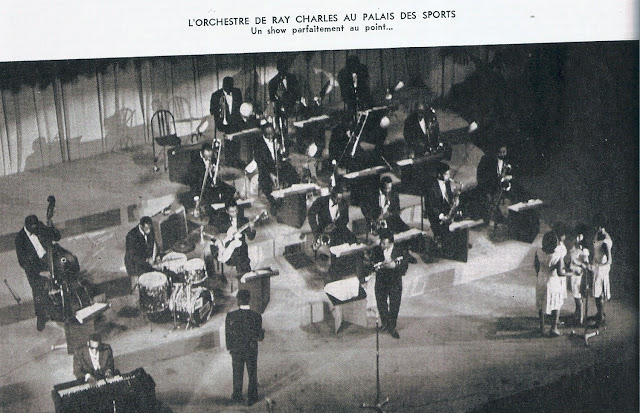Ray Charles What I'd Say
Soul music has been with us since the first slaves raised their voices to heaven. Despite the horror of their daily lives, for a few brief moments on Sunday morning, they would collectively raise their voices to try and catch God's attention by singing the brightest most joyful sounds they could create. If you've ever sat in a black church and listened closely to the choir you can still hear the reverberations of their ancestors singing and clapping as they released their misery to a God they fervently prayed was listening.
 |
| Ray Charles an American original |
Emerging from that abominable past is, perhaps, the greatest music & musicians the world has ever known. In the song Black or White Michael Jackson communicates an entire communities inter-generational pain that first found voice in those slave churches. Despite his wealth and success he felt compelled to tell the world "I'm not gonna spend my life being a color". NWA's 1988 record Straight Outta Compton expresses the anger many black people feel when they come to understand that they are going to be denied entry into the middle class body politic. In 1968 Martin Luther King was gunned down. Then in 1971, shortly before he too was murdered, a melancholy Marvin Gaye asked "What's Going On"?
Before we can understand the music of those artists we need to look further back at their predecessors. In the early 1900's two musical genres emerged, jazz and blues. Blues developed on the share crop farms in the sweltering heat of the deep south. Acoustic guitars, harmonica's and an occasional horn was all that was available amidst the crushing poverty ubiquitous in every share-cropping community. Their music told the story of a people that were still institutionally prevented from enjoying the American dream.
Jazz was an urban phenomenon that developed in America's openly bifurcated cities. It displayed the incredible talents of that generations ability to play together in a new and distinctly American musical genre best described as "freestyle". These new musical schools emerged in the communities of the least free people in America. The influence they had on all future rock music is not just ironic, it is also as powerful of a statement as those raised voices found in the antebellum Churches.
Born into these traditions was a future Rock and Roll Hall of Famer and one of the creative inventors of the genre known as "Soul" Ray Charles. While Ray wasn't alone in the invention of soul music, his 1959 song What'd I Say was the first of this new genre to crossover from the race music R&B charts and smash down the walls on the national (re:white) charts as well. Ray's success helped fuel the Motown and Stax success that would begin finding it's voice within the next year. It helped musicians like James Brown, Muddy Waters, Jackie Wilson, Chuck Berry, Sam Cooke, Etta James, & Little Richard get out from under the limiting "race music" label and finally start reaching the entire world.
What I'd Say is a legendary piece of music that had an accidental beginning. Ray and his band had played their entire set but couldn't leave the stage because their contract obligated them to play for a certain amount of time and that clock had not yet expired. Ray, drawing on the historically rich influences of every black musician that had come before him, led his band through a musical improvisation that reportedly, for several nights in a row, brought the house down and eventually captured the imagination of the world.
 |
| Ray (left foreground) the band and the Raelettes |
 |
| Ray, Quincy Jones, & BB King. Soul, Jazz, & Blues |
The song was panned by Billboard and banned on many white rock and roll stations but that didn't stop it. Like the nightclub audiences where Ray debuted the song the American public quickly learned that resistance was futile. While conservative older white's flipped the station whenever it came on the kids couldn't stay away. The clear sexuality of the song, wrapped up in one of the most dance-able tunes ever recorded made the song a natural at every house party. I always imagined it was the song last heard before an entire generation of teenagers lost their virginity...
The absolute must see movie for music lovers: Ray
Jaimie Fox's award winning performance of What I'd Say captures the spontaneity that created the song, the controversy that followed it's release, and the success it enjoyed.
No comments:
Post a Comment